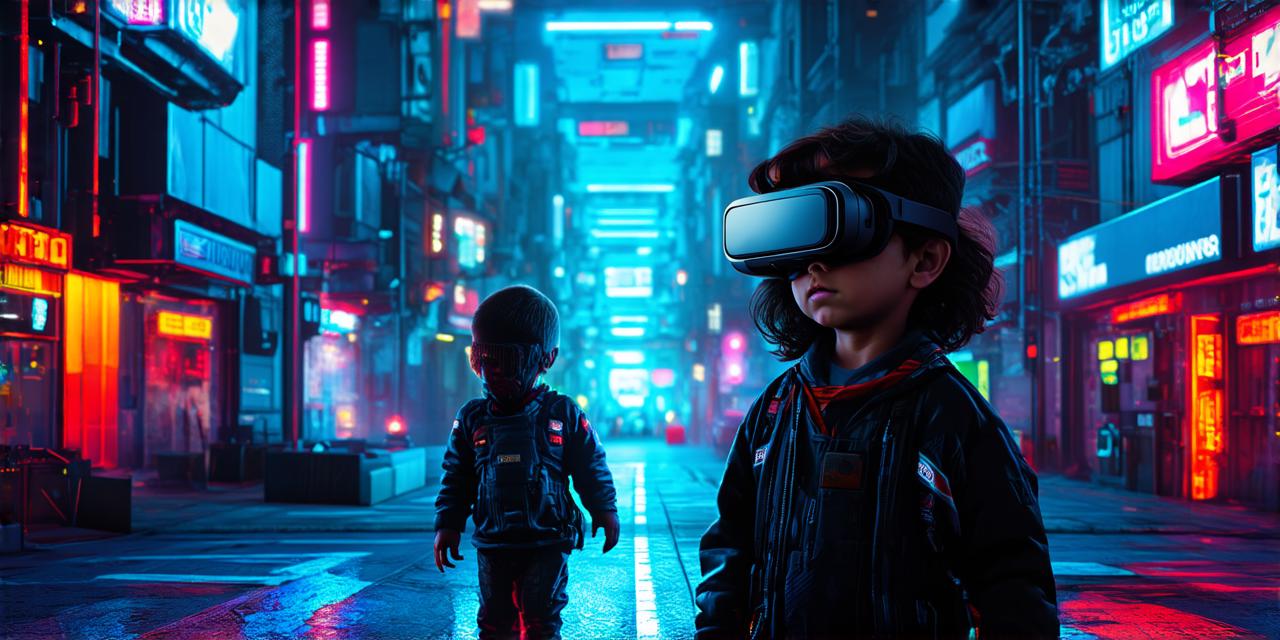1. The Impact of Virtual Reality on Children’s Brain Development
Virtual reality technology has been shown to have an impact on children’s brain development. Studies have found that VR exposure can lead to changes in the structure and function of different areas of the brain, including the prefrontal cortex, hippocampus, and amygdala. These changes can affect children’s cognitive abilities, memory, and emotional regulation.
One study conducted by researchers at the University of California, Irvine, found that VR exposure led to a significant increase in gray matter density in the hippocampus, which plays a critical role in memory formation and retrieval. Another study conducted by researchers at Stanford University found that VR exposure led to changes in the prefrontal cortex, which is responsible for decision-making, attention, and self-control.
While some of these changes may be beneficial, others can have negative effects on children’s development. For example, excessive VR exposure has been linked to symptoms of anxiety, depression, and post-traumatic stress disorder (PTSD). This is because VR experiences can be highly immersive and emotionally intense, which can trigger the body’s stress response and lead to feelings of anxiety and fear.
2. The Negative Impact of Virtual Reality on Children’s Social Skills
Virtual reality technology can also have a negative impact on children’s social skills. While VR can provide opportunities for children to interact with others in virtual environments, it may not be able to replicate the rich social interactions that occur in real life. This can lead to difficulties in developing essential social skills such as communication, empathy, and cooperation.
One study conducted by researchers at the University of California, Santa Barbara, found that children who spent more time playing virtual reality games were less likely to engage in face-to-face play with their peers. Another study conducted by researchers at the University of Washington found that VR exposure led to a decrease in empathy and perspective-taking abilities in adolescents.
This can be particularly concerning for children who already struggle with social interactions. Excessive VR use may exacerbate these difficulties, making it harder for them to form healthy relationships and navigate the complex world of social interactions.
3. The Negative Impact of Virtual Reality on Children’s Physical Health
Virtual reality technology can also have a negative impact on children’s physical health. While VR can provide opportunities for exercise and physical activity, it may not be able to replicate the benefits of traditional exercise.
One study conducted by researchers at the University of Maryland found that children who spent more time playing virtual reality games were less likely to engage in physical activity outside of the virtual environment. Another study conducted by researchers at the University of British Columbia found that VR exposure led to a decrease in physical fitness and cardiovascular endurance in young adults.
This can be particularly concerning for children who are already at risk for obesity or other health problems. Excessive VR use may exacerbate these difficulties, making it harder for them to maintain a healthy weight and lifestyle.
4. The Negative Impact of Virtual Reality on Children’s Mental Health
Virtual reality technology can also have a negative impact on children’s mental health. While VR can provide opportunities for therapy and treatment, it may not be able to replicate the benefits of traditional therapy.
One study conducted by researchers at the University of Oxford found that VR exposure led to an increase in symptoms of anxiety and depression in young adults. Another study conducted by researchers at the University of California, Irvine, found that VR exposure led to a decrease in self-esteem and body image satisfaction in adolescents.
This can be particularly concerning for children who already struggle with mental health problems. Excessive VR use may exacerbate these difficulties, making it harder for them to manage their symptoms and maintain good mental health.
5. Solutions to Mitigate the Negative Effects of Virtual Reality on Children
While there are concerns about the negative effects of virtual reality on children, there are also solutions that can mitigate these effects. One solution is to limit the amount of time that children spend using VR technology. Researchers recommend no more than 2 hours of VR exposure per day for children under the age of 18.

Another solution is to provide children with opportunities for face-to-face play and social interaction. This can include activities such as sports, arts, and music. Parents can also encourage their children to spend time outdoors and engage in physical activity.
Finally, it is important to ensure that VR technology is used in a responsible and ethical manner. Developers should prioritize the well-being of children when designing and promoting VR experiences. This includes conducting thorough research on the potential effects of VR on children and implementing safeguards to prevent excessive use or exposure to potentially harmful content.
Conclusion
In conclusion, virtual reality technology has the potential to have both positive and negative effects on children’s development and well-being. While there are benefits to using VR for education, entertainment, and therapy, it is important to be aware of the potential risks and take steps to mitigate them. By limiting VR exposure, providing opportunities for face-to-face play and social interaction, and ensuring responsible use of VR technology, we can help ensure that children have a positive experience with virtual reality and reap the benefits of this exciting new technology.
